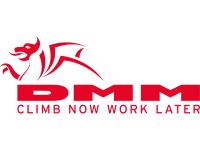... Les Sykes and myself tested a considerable number of BP anchors in Ingleton Quarry and we found that one of the major problems was that the hole had to be meticulously cleaned. Any dust or limestone surry in damp holes had to be cleaned out. I suspect that many of the loose anchors reported may be due to insufficient cleaning. In Derbyshire around 2012 DCA Hydrajaws tested to EN959 over 400 anchors, mainly Eco, some of which had been installed as early as 1994 without a single failure. The 100mm BP Anchors that Les and I tested failed at an extractive force of between 32 & 65kN with the failure mode being substrate failure in virtually every case. Also we noted that even when the rock was breaking up and the anchor was extracted to half its length they were still showing approx. 20kN on the gauge. We also noted that the Allgrip KMR resin gave marginally higher extractive forces that the Fischer FIS V styrene free resin. I am of the opinion that the BP anchors with either resin are the strongest available given that substrate failure is almost excusively the result of axial forces. The only way that higher anchor extraction forces could be achieved would be to increase anchor length but given that every other item, i.e. ropes, carabiners, maillons etc in the safety chain would have failed before the anchor what would be the point.


